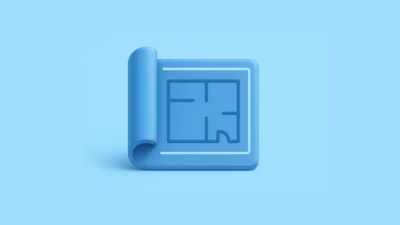You know that low-key panic you feel when you sign up for an online course and think, “This time, I’m totally going to stay on track”… and two weeks later you’re six modules behind, half the videos are “saved for later,” and your motivation is somewhere between “I’ll start tomorrow” and “Maybe data science isn’t for me”?
Yeah. Same.
Learning data science online sounds like a dream: flexible schedule, millions of resources, pajama-friendly. But it also sneaks up on you with hidden enemies: distraction, burnout, and plain old decision fatigue. (Ask me about the week I spent “building my study plan” and… studied exactly zero minutes.)
The good news? Time management isn’t some mythical power only Type-A productivity gurus have. It’s a skill — and like any skill, it can be learned, tweaked, and even made fun if you do it right.
Let’s break it down.
The Problem Isn’t Time — It’s Energy (and Focus)
Here’s the dirty little secret nobody tells you: you probably have enough time already.
What you don’t have? Consistent, focused energy.
Think about it. How many hours do we spend flipping between tabs, checking emails, refreshing Reddit, making elaborate color-coded Notion dashboards… but not actually doing the work?
When I first tried learning machine learning online, I thought the solution was to block six-hour study marathons on Saturdays. Guess how many Saturdays that lasted? (If you guessed “barely two,” congrats.)
Real progress came when I stopped pretending I was a robot and started respecting my human brain. Small bursts of focused learning > long guilt-soaked cramming sessions every time.
👉 Quick Tip:
Plan your study in short, focused sprints — 25 to 45 minutes max.
After that? Take a real break. Get up. Move around. Reward yourself with something non-digital.
Setting Realistic, Ruthless Priorities
Here’s where most beginners (and honestly, plenty of pros) crash and burn: trying to learn everything at once.
Python! SQL! Data visualization! Deep learning! Big data! Statistics! Oh, and maybe throw in Kubernetes and AWS for flavor?
I get it. Data science is a giant buffet and everything looks delicious. But if you try to eat the entire table, you’re just going to end up sick and sad.
You need to choose your battles — ruthlessly.
Ask yourself:
- What’s my next goal, not my final dream?
- What skills do I need to actually get there?
If your next step is to land a data analyst internship, you probably don’t need to master GANs right now. If you want to build a personal project portfolio, focus on Python, pandas, and basic visualization.
👉 Quick Tip:
Pick one “main dish” skill at a time.
Example: “This month, I’m getting comfortable with pandas and NumPy. Everything else is bonus.”
Designing Your Personal Learning System (That You’ll Actually Stick To)
Alright, let’s talk nuts and bolts. You don’t need a 97-step plan. You need something simple and flexible enough that you’ll actually use it.
Here’s a basic skeleton you can steal:
1. Weekly Planning Session (15 min on Sunday):
- What’s the ONE big thing I want to learn or build this week?
- Block 3–5 study sessions on your calendar (treat them like doctor’s appointments — non-negotiable).
2. Daily Micro Goals:
- Before each session, write a tiny goal: “Finish pandas tutorial 5” or “Complete SQL joins exercise.”
- No vague “study data science” entries allowed. Get specific.
3. Weekly Review (10 min on Friday):
- What went well?
- What felt hard?
- What tiny tweak could make next week smoother?
When I started doing this — instead of trying to “learn whenever I find time” — my consistency shot up like crazy. And bonus: my guilt levels plummeted.
👉 Quick Tip:
Keep your system visible and simple. Sticky notes on your desk > elaborate Trello boards you never open.
Battling Procrastination (Spoiler: It’s Not About Willpower)
Let’s be real: even with the best plans, there will be days when scrolling Instagram or deep-cleaning the fridge feels wildly more appealing than wrangling a messy dataset.
Good news: that doesn’t mean you’re lazy or broken. It means you’re human. Welcome to the club.
The trick is to lower the activation energy — make starting so easy it’s almost automatic.
One thing that saved me? A rule I call “The Lazy Five.”
Whenever I feel like avoiding work, I tell myself: “Just do five minutes.”
- Open the Jupyter notebook.
- Read the first paragraph.
- Type one line of code.
Most of the time, after five minutes, inertia takes over and I keep going. If not? Hey, I still did five minutes — that’s better than nothing.
👉 Quick Tip:
Set an absurdly easy starting goal: “Open the course page.” Often, starting is 90% of the battle.
Mixing Practice and Play (So You Don’t Burn Out)
If your learning routine feels like a miserable death march, congratulations — you’re going to quit soon.
Data science should be challenging, sure. But it should also be fun. Intriguing. Creative.
That’s why mixing serious practice with playful projects is key.
Don’t just grind through tutorials. Pick goofy mini-projects:
- Analyze your Spotify playlists.
- Predict who’s going to win your fantasy football league.
- Scrape recipes and find out which ingredients show up the most.
One of my favorite early projects? I scraped dog adoption data and built a silly model predicting which dogs would get adopted fastest based on their names. (Spoiler: dogs named “Buddy” crushed it.)
These side quests kept me excited — and weirdly, taught me way more practical skills than endless “Learn pandas in 12 hours!” videos.
👉 Quick Tip:
For every “serious” study goal, add a “just-for-fun” side project. It keeps your brain happy.
Learning How to Say “No” (Without Feeling Like a Failure)
Here’s an uncomfortable truth: you will have to say no to good things to say yes to great things.
You will have to:
- Say no to taking every free webinar.
- Say no to signing up for every new course.
- Say no to hanging out sometimes, yes, even when your friends call you lame.
But you’re not saying no forever. You’re saying no for now.
You’re trading short-term FOMO for long-term satisfaction — the kind that comes when you finish what you started and see real progress.
When I committed to a three-month data science learning plan, I missed a few parties, skipped some Netflix binges, and probably annoyed my group chat. But finishing that plan felt like winning a personal championship.
👉 Quick Tip:
Before you say yes to anything, ask: “Will this help me get closer to my current goal?” If not, park it for later.
Wrapping Up: Small Wins, Stacked Daily, Change Everything
If you take nothing else from this, let it be this: You don’t need giant leaps. You need small wins, stacked daily.
- 30 focused minutes a day beats an all-day cramming session once a month.
- One finished tutorial beats six half-watched courses.
- One small project you ship beats a million “coming soon” ideas.
Learning data science online is a long road. But it’s not a lonely one — thousands of us are walking it, tripping sometimes, dusting ourselves off, and keeping on.
Trust your slow, steady grind. Protect your time and energy like they’re gold (because they are). Celebrate the tiniest progress like it’s a parade.
You’ve got this. And if today’s session didn’t go great? Cool. There’s always tomorrow’s blank notebook waiting for you.
P.S.
Need a quick starter ritual for your next study session? Here’s mine:
- Coffee ☕
- Lo-fi playlist 🎶
- One sticky note: “Today’s Goal” 📝
Simple. Ritualized. Weirdly powerful.





